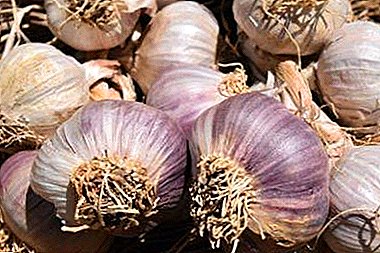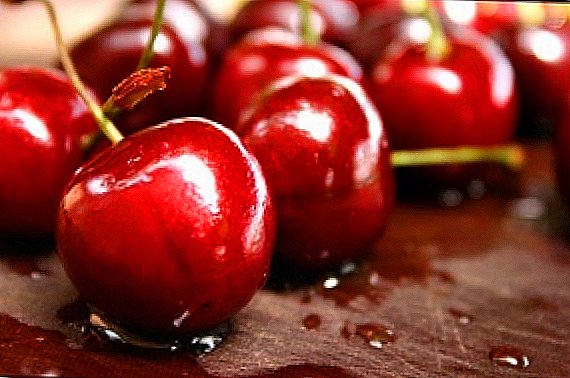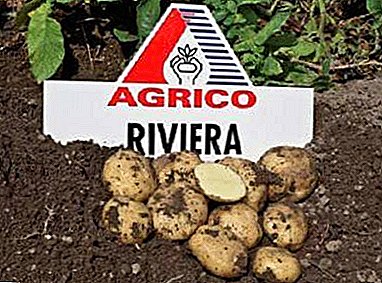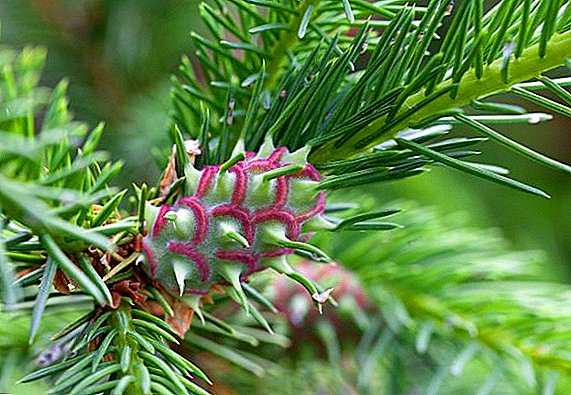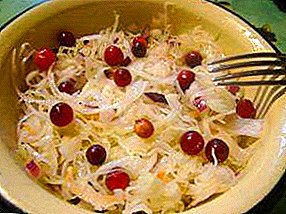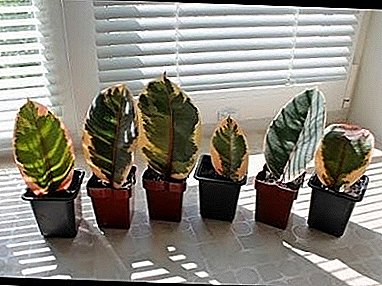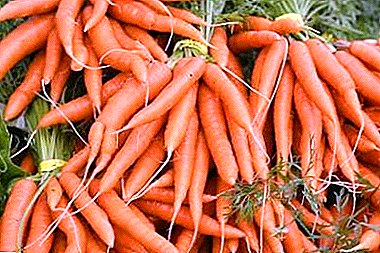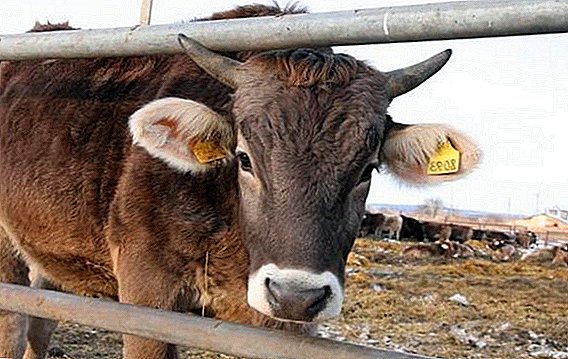 Caucasian brown breed of cows refers to the mixed type.
Caucasian brown breed of cows refers to the mixed type.
In this type, there are three more subtypes: milk, milk and meat, and meat and milk.
Mainly in the breed dominates the milk and meat direction.
History of origin
The history of the breed began in the Caucasus region (Armenia, Georgia, Azerbaijan, Dagestan). The task was to bring animals with high milk yield and good meat characteristics.  To achieve the goal, it was decided to cross the local mountain cows with Swiss bulls. Bullheads were selected for selection, whose mothers gave high milk yield. Received calves were taken for maintenance in good conditions and further crossing between themselves.
To achieve the goal, it was decided to cross the local mountain cows with Swiss bulls. Bullheads were selected for selection, whose mothers gave high milk yield. Received calves were taken for maintenance in good conditions and further crossing between themselves.
Such hard work lasted 30 years, starting in 1930. Its result was the Caucasian brown breed of the milk and meat direction, which was registered in 1960. In parallel, from the crossing of cows of the Caucasian breed with bulls of the Kostroma and Lebedinskaya breeds, a meat-and-milk line of breed appeared.
Description and Features
The main difference of this breed from others is the compactness and muscularity of animals. They also have a thin bones, which is positively displayed on the meat qualities of cows.
Meat and dairy cattle breeds also include such Kazakh white-headed, Sychevskaya, Shvitskaya, Yakut mini-cow, Krasnogorbatovskaya, Simmental.
Appearance and physique
- Weight. Bull - 700-800 kg, cow - 430-480 kg, calf (bull) - 28 kg, calf (heifer) -24 kg.
- Height (at the withers). 1.23-1.29 m, measuring the chest - 37-41 cm.
- Color Brown. Each individual has its own shade.
- Wool. Short, smooth.
- Udder. Rounded, but maybe cup-shaped. The skin stock on it is large, the nipples are developed, the milk veins are pronounced, the skin is elastic.
- Head. Medium size.
- Neck. Short
- Limbs. Short, strong, strong.
- Rear part. Wide, slightly drooping.

Meat and Dairy Indicators
Representatives of this breed have the following characteristics:
- Nadoy for 305 days of lactation - 4000-4500 kg. The first lactation in poor vitriol (500-600 kg per lactation). After the second calving, the indices increase (up to 1000 kg). From the third to the productive level. The milk direction of the breed gives 23.5% more milk than the milk-meat direction, and 61.1% more than meat and milk.
- Milk Fat - 3.78% (milk direction), 3.84% (milk and meat). In winter, the rates increase to 4.4%.
- Protein content - 3,35-3,40%.
- Milk has a valuable biochemical composition and special technological qualities, therefore it is constantly used to make dairy delicacies.
- Live mass of dairy type - 453-514 kg, milk and meat - 470-529 kg, meat and dairy - 514-541 kg.
- Breed ripening. The first calving is at 14-15 months with a weight of 250-300 kg. Pregnancy - 285 days. In 2.4% of cows, twins can be born, in 0.013% - triplets.
- Calf born weighing 24-26 kg (on average). By 6 months gets up to 126 kg. In 18 months - up to 259-270 kg. Per day increase of about 600 g.
- Bychkov begin fattening with 16 months. At this age, they weigh about 700 kg.
- Meat outlet in relation to the weight of the carcass 53-60% (depending on the age of the animal).
Did you know? In Georgia, the Caucasian brown cow was actively bred in the breeding farm "Bashkichetsky". The average yield was about 4000 kg with a mass of young cows of 500 kg. But there was also a record holder. For 305 days, the Krajl cow was able to produce 8789 kg of milk with a fat content of 0.11% higher than the average with a weight of 560 kg. At 1 kg of its mass accounted for 15.7 kg of milk.
Advantages and disadvantages
Advantages:
- unpretentiousness;
- fairly high productivity;
- the ability to bring more than one calf;
- consumes less food than other meat and dairy cows.
Disadvantages:
- meat yield is small;
- pereborchivaya in food.

Care and feeding ration
In order for cows of meat and dairy direction to give good performance of milk yield, they must be properly looked after. In winter, it is desirable to keep them in a stall, and in the summer - to send to pastures. Slaughter gobies need their own diet.
Requirements for the room
In order for the cattle to be comfortable in winter, care must be taken to equip the barn. It should not be cracks, as animals do not tolerate drafts. Windows should be used for ventilation, they should be in the side or behind, but above the head of the cows.
Fresh air must flow not only through the windows, but also the ventilation system. It also regulates the level of humidity, which in winter should be maintained at around 75%.
Important! Representatives of the Caucasian brown rock are accustomed to living in the changeable climate of the mountains, but for their comfortable existence it is desirable to maintain the temperature not lower than -10 ° C in winter and not higher than + 20 ° C in summer.
For good yields, daylight hours are needed at 4 pm Additional lighting is better to do LED. It is more economical and durable.  In the barn for each individual stands a stall. On average, its length should be 180-190 cm, and width - 140 cm. The leash should not interfere with the animal to lie down freely and stand up. The floor in the stall is covered with straw cutting, peat chips, chips from deciduous trees, fallen leaves. You can make a warm floor: lined with boards of maximum thickness.
In the barn for each individual stands a stall. On average, its length should be 180-190 cm, and width - 140 cm. The leash should not interfere with the animal to lie down freely and stand up. The floor in the stall is covered with straw cutting, peat chips, chips from deciduous trees, fallen leaves. You can make a warm floor: lined with boards of maximum thickness.
It is desirable to make the feeder semi-oval with a width in the lower part of 50 cm, and in the upper - 80 cm. A single portion of coarse food should be placed in it. Dry and wet food needs different capacities. Drinkers are better to use automatic.
Learn how to build a barn, and make a stall for cows with your own hands.
Cleaning the barn
The walls in the barn, partitions, feeders and drinkers must be disinfected twice a year: after pasture on cattle pasture and before it is driven into a stall.
Manure is cleaned every day. Also feed troughs and drinkers are washed daily. Straw bedding also changes every day. For cows to rest comfortably, it is necessary to use 1/4 centner of straw per week.
Feeding and watering
Summer menu of Caucasian brown cows:
- 6 kg of hay in the morning and evening;
- a mixture (2 kg) of barley, sunflower, oats is divided into lunch and evening feeding;
- 0.6 kg of bran at lunch and in the evening;
- 600 g of sunflower meal for lunch and evening feeding;
- 400 g of meat and bone meal at lunch and in the evening;
- 16 kg of silage, alfalfa haylage is divided into three feedings;
- vitamin and mineral supplements.
 If the fat content of milk in the summer has fallen, it is necessary to increase the proportion of meal, bran and cereal mixtures in the diet. These foods are high in protein.
If the fat content of milk in the summer has fallen, it is necessary to increase the proportion of meal, bran and cereal mixtures in the diet. These foods are high in protein.Important! In the summer before walking, the animal must be fed with hay or straw in order to prevent the scar from timpani.
Winter menu:
- 15 kg of hay three times a day;
- 3 kg of barley day and evening;
- 16 kg of pumpkin and zucchini for lunch and evening feeding;
- 30 kg of silage in the morning and in the evening after hay;
- 5 kg of sugar beet or carrot with vegetables;
- 1.5 kg of bran at lunch and in the evening;
- 1 kg of concentrate at the time of milking.
Individuals fattening to meat should receive at least 100 kg of grass in the summer. Feed them with every milking.
The summer menu of meat individuals is:
- 5 kg of haylage, 4 kg of silage in the morning before walking and in the evening;
- 9 kg of root vegetables and vegetables twice (lunch, evening);
- 1 kg of bran and meal for lunch;
- 4 kg of feed in the evening;
- 5 kg of carrots in the afternoon and evening;
- 8 kg of cabbage or turnip for lunch and evening.
 Winter diet:
Winter diet:- 30 kg of silage and 18 kg of root crops for three feedings;
- 6 kg of vegetables and carrots;
- 15 kg of turnip;
- on 1 kg of concentrates, cake, mixes grain in the lunch and in the evening.
For drinking, cows need to be given no colder water than + 10 ... + 12 ° С. It is desirable to drink after feeding juicy food. The number of watering should be equal to the number of feedings. In winter, you can not drive a herd to a watering place. During this period, the water is better to harvest in large containers and place them in the room.
Did you know? In European countries, beef is obtained not from meat breeds, but from dairy, meat and dairy. Because of this, breeders are constantly working to improve the meat qualities of these cows.
As you can see, Caucasian dairy beauties are unpretentious in care and nutrition. Nature endowed them with good immunity so that they could survive in a changeable mountain climate, therefore, while providing comfortable living conditions for animals and balanced feeding, they will not give much trouble, but will only please with good yields.


